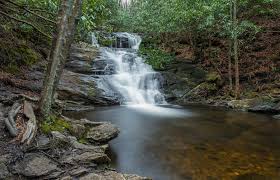
I love nature and I’m also attracted to ruchniyus (spirituality). It was only natural
that I made Eretz Yisrael my home, being the place where ruchniyus is natural
and where nature is ruchniyus.
From the Teveria apartment building I live in, there are
views of the beautiful Kinneret and its green surroundings. I enjoy looking at
the scenery and connecting to the kedusha (holiness). It’s not just a big and beautiful lake – all other
lakes in the world get their chiyus (vitality) from the fact that Hashem
“personally” keeps His “eyes” on this one. This is true as well for the
mountains, valleys, plains, skies, oceans, and all of nature. The kedusha
root of all of them is in Eretz Yisrael.
One thing I love about Eretz Yisrael is that I can be a frum
Yid and also ride a horse. (Maybe not in the city, but not too far out.) I
need access to nature, and here I have all of that as a frum Yid who is
part of a normal kehillah. Within the small area of Eretz Yisrael, there
are plains, deserts, an alpine mountain (the Hermon), forests, a coastal
region, and more. I explore as much as I can, both my immediate surroundings
and the wider area.
It used to be that we had to be in golus to collect
the nitzotzos (sparks) of kedusha from all around, but now, many
are making their way straight to us in Eretz Yisrael. We don’t need to be
outside of Eretz Yisrael to make a bracha on coffee beans from Costa
Rica and thus be metaken (spiritually rectify) them. We can find them in
the coffee corner in our local shteibel, and that’s just one small
example.
I originally came to Eretz Yisrael from the U.S. on a tour,
but while on the bus from the airport, I was already sure this was the place I
wanted to call home. My wife had been here for seminary, so she knew what Eretz
Yisrael was like. We lived in Milwaukee for the first two years of our
marriage, which is a great community if you must live in chutz la’aretz.
We then had the zechus (privilege) of pursuing opportunities in ruchniyus
here in Eretz Yisrael.
At first we lived in Ramat Beit Shemesh, but the rising
prices forced us out. We came about two years ago to join a small kehillah
in Teveria Illit. The warm, family-oriented feel of the small kehillah
and the slower pace of life here in Teveria was a welcome change from the
larger communities we had lived in before. My wife and children quickly made
many friends, as might be expected in a new community.
We are now part of the unbroken chain of frum Yidden
who have had a long and ancient presence here in Teveria, sanctifying this
place with their Torah and mitzvos. Though there has recently been a
renaissance of the chareidi population
here, their presence has always existed. Since the days of Rav Menachem Mendel
of Vitebsk, talmid of the Mezritcher Maggid, who lived in Teveria about
250 years ago, many chasidim have
called this place home, infusing the city with a spirit of Torah and avodas
Hashem.
More recently, there has been a steady growth in the frum
community, which includes many different sects of chareidim. I sighted a busload of Toldos Aharon chasidim returning from Rosh Hashanah in
Yerushalayim. Karlin has an impressive representation, and so does Sanz. The
Litvish have also recently started a community, and Sefardi bnei Torah
have always been around. There are some Slonimers and Lelovers as well. One of
the kehillos built a new and beautiful beis medrash, which was
filled beyond capacity just two weeks after its inauguration as they had not
anticipated such quick growth.
Every
week, more people arrive in Teveria. New schools open, and new batei midrash
are built. I too have opened a yeshiva; it is
for English-speaking, unaffiliated
young Jewish men who are searching for a deeper understanding of the importance
of
their Jewish heritage.
The
communities here are primarily Israeli, though there are a few English-speakers
and even an English-speaking Rebbe (Lizhensk). I would be happy if other
English speakers would join us to take advantage of the opportunities Teveria
affords.
Just a short few years ago, when I had occasion to visit
Ramat Beit Shemesh and people heard that I live in Teveria, they would react
incredulously, as if I were living on the moon. Now, people ask me about what’s
happening here as it’s becoming a more mainstream option.
The heimish infrastructure is well-developed and
getting better all the time. There is also the wonderful, pleasant feeling of
the city
– warm and inviting, quiet and relaxed. Cars stop for pedestrians
with a smile.
Several
years ago, we were operating a small vegetable farm in Yish’i, a small moshav
near Beit Shemesh. After moving to Teveria, we restarted as a compost
manufacturer. Eretz Yisrael has a
relatively dense population, and there are not enough places to handle the
waste produced. By turning food waste into compost, we are not only making a parnassah, we are also minimizing the amount of garbage piling up on the Land. This
is an important thing to do anywhere; it is all the more so in Eretz Hakodesh.
This
article is part of the Eretz Chemdah series featuring Anglo-Chareidim living
in, settling, and building up Eretz Yisroel. A project of Avira D'Eretz
Yisroel, coordinated by Yoel Berman - info@aviraderetzyisroel.org.






